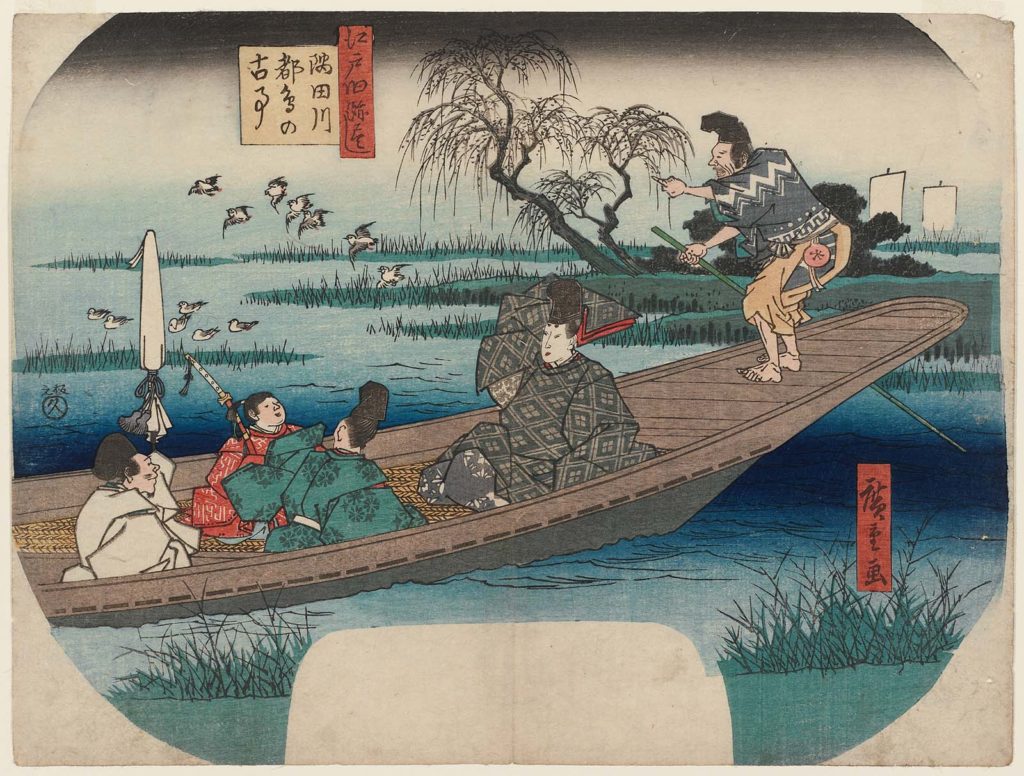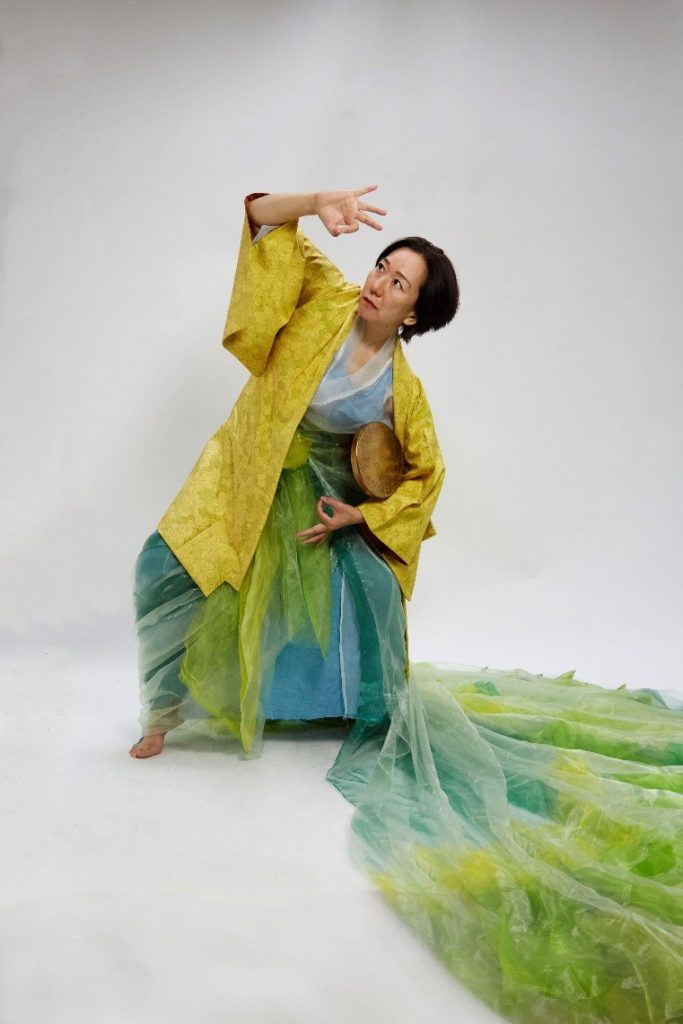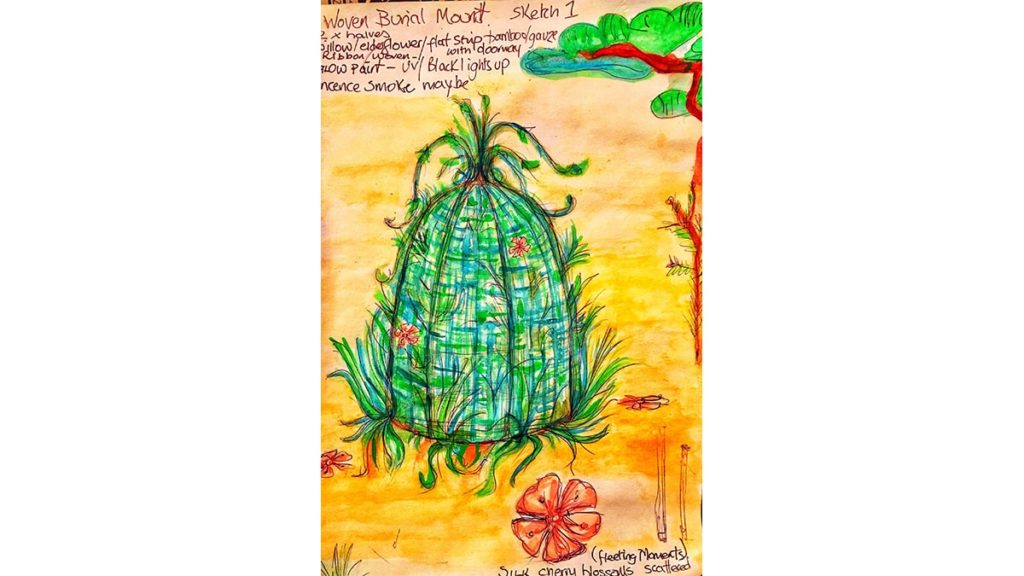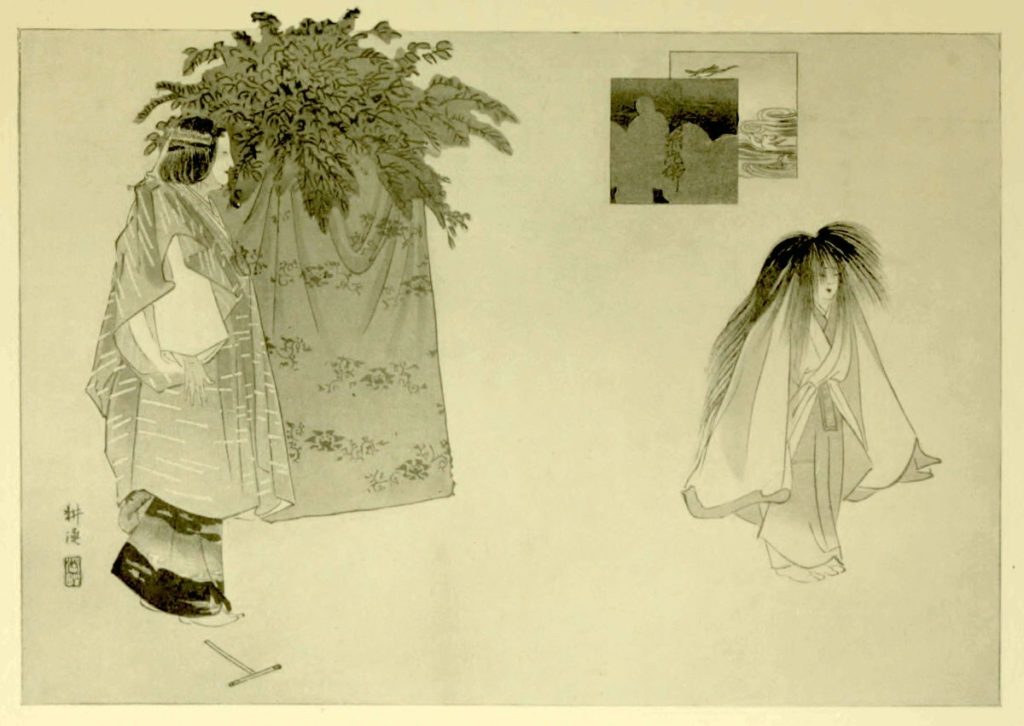Sumida River in Sign Language
Feature
Now in its third edition, the bi-annual Noh Reimagined festival returns to Kings Place in June 2022. One of the highlights is a 21st century makeover of the famous play Sumida River, which is performed by Deaf actors.
Sumidagawa (Sumida River) is a classic Japanese Noh play written by Kanze Motomasa (c.1400—1432) that has inspired Japanese and Western artists through the ages, from Chikamatsu Monzaemon’s puppet play Futago Sumidagawa (1720) to Benjamin Britten’s opera Curlew River (1964).

The Story
A mother from Kyoto, mad with grief, arrives at Sumida River looking for her son kidnapped by child slave traders. As the Ferryman takes her across the water in his boat, they see a gathering of mourners on the opposite shore attending a memorial service for a boy who perished by the river a year previously. This turns out to be the woman’s missing son and during her lament and invocation to Buddha, his ghost appears from out the grassy burial mound before vanishing with the dawn.
Sign Languages
In this special production by What More? Productions, with direction by Verity Lane, Sumida River is reinterpreted through the shapes and patterns of the different sign languages of the performers. Chisato Minamimura plays the Mother using JSL (usually, the shite – the lead role – is performed by a male actor, who wears a mask).
In the original script, the Mother, from Kyoto, impresses the Ferryman with her sophistication and learning. To emphasise the differences between these two characters, the Ferryman (the secondary character, the waki) played by Brian Duffy, responds in BSL and the audience follows the story through his signing, voiced by Elizabeth Oliver.
To bring out the beauty of the hand gestures, the costumes designed by Mirei Yazama have shorter sleeves than usual and the Noh emphasis on the movement patterns of the feet (such as sliding feet – suri-ashi) is relocated to the hands, introducing a collage effect of different elements. By using JSL and BSL we hope to promote the idea of language as a culture as well as a system, here, written on the body rather than a screen.
There’s also a theatrical form of signing more akin to mime called Visual Vernacular and this is shown in sections of video art in the production.

Chisato Minamimura as the Mother signing in JSL. ©After Hourz
Sumida River in Sign Language builds bridges between two eras, two cultures, two cities, two rivers and in this way one culture and time reflects another through a drama of gestural intensity.
Noh and Not-Noh
In this production, we’ve kept the shite’s walk along the bridge to the stage holding a sasa branch (symbol of her madness) and the dance of anguish (the kakeri) as well as some of the drumming patterns, and the main prop, the Mound, a kind of island of grief from which the ghost child emerges. The shite character is unmasked to aid communication and, instead, the Noh mask is worn by the ghost to create and unsettling atmosphere of otherworldliness and magic.
There are several contrasting interpretations of the classic, Sumidagawa. Kanze Motomasa, the author, thought the ghost child should appear, while his father, Zeami, argued that the ghost exists only in the Mother’s imagination and that she should act as though she sees him but that he shouldn’t be represented on stage.
In our version, we show him. We’ve stripped away the traveller (the wakitsure, who accompanies the Ferryman) and the chorus, preferring to use a more active musician who follows the performers and occasionally plays them!
We hope to retain the poetic ritualistic flavour of Noh through stylised, stately movement. The circularity of life and death fuse in the Buddhist ceremony around the Mound, where abstract movement is matched by abstract sound.

Sketch of the Mound © Harriott Knuckles
Time and the River Speaks
The river is a connective element between the Mother and the Ferryman; they are more equal when they’re together in the boat. There’s also a mythic feel that we associate with the river Styx and Charon, the ferryman who transports the souls of the dead to the underworld; in the Noh play the river is a frontier between the earthly and the spiritual. The Mother leaves solid land and travels painfully across the water towards the discovery of her son’s death.
More broadly, the river is a timeless feature of any city —imagine London without its signature waterway, the Thames. Tokyo has changed beyond recognition from a small fishing village to a built-up city where agricultural, commercial and administrative offices and warehouses line the river bank. Perhaps we can say that time itself is embodied in those buildings.
Sumida River in Sign Language is aligned to the flow of time, bringing us from the distant past, to the present day, to the future. For the Mother, time has lost its meaning; she exists in an anguished present, while the Ferryman’s day is governed by the currents and his daily crossings. The Mother arrives too late to rescue her child or soothe him on his final journey, but through chant and ceremony she can finally grieve and pray for his soul. Nature itself promises a kind of rebirth: ‘There he lies buried/with only the new growth of spring/to cover his tomb’.

The Sound World of Sumida River in Sign Language
Director and composer Verity Lane has taken a multi-disciplinary approach to the production, folding in Beibei Wang’s live percussion with recordings that include nohkan (Japanese flute), Chisato’s voice and the flow of a river captured in Kyoto.